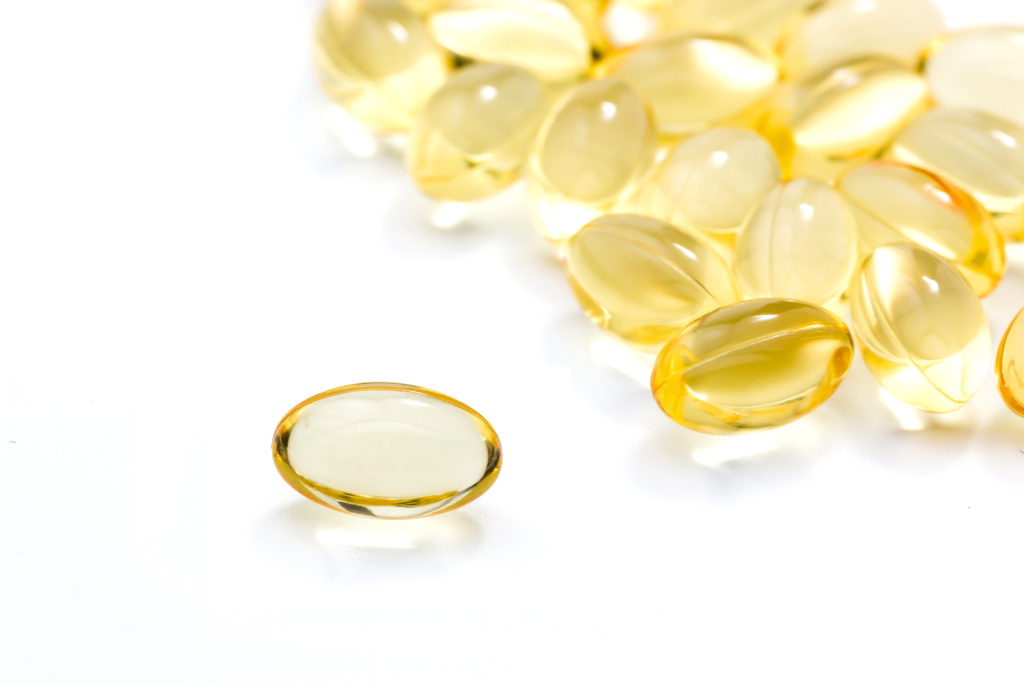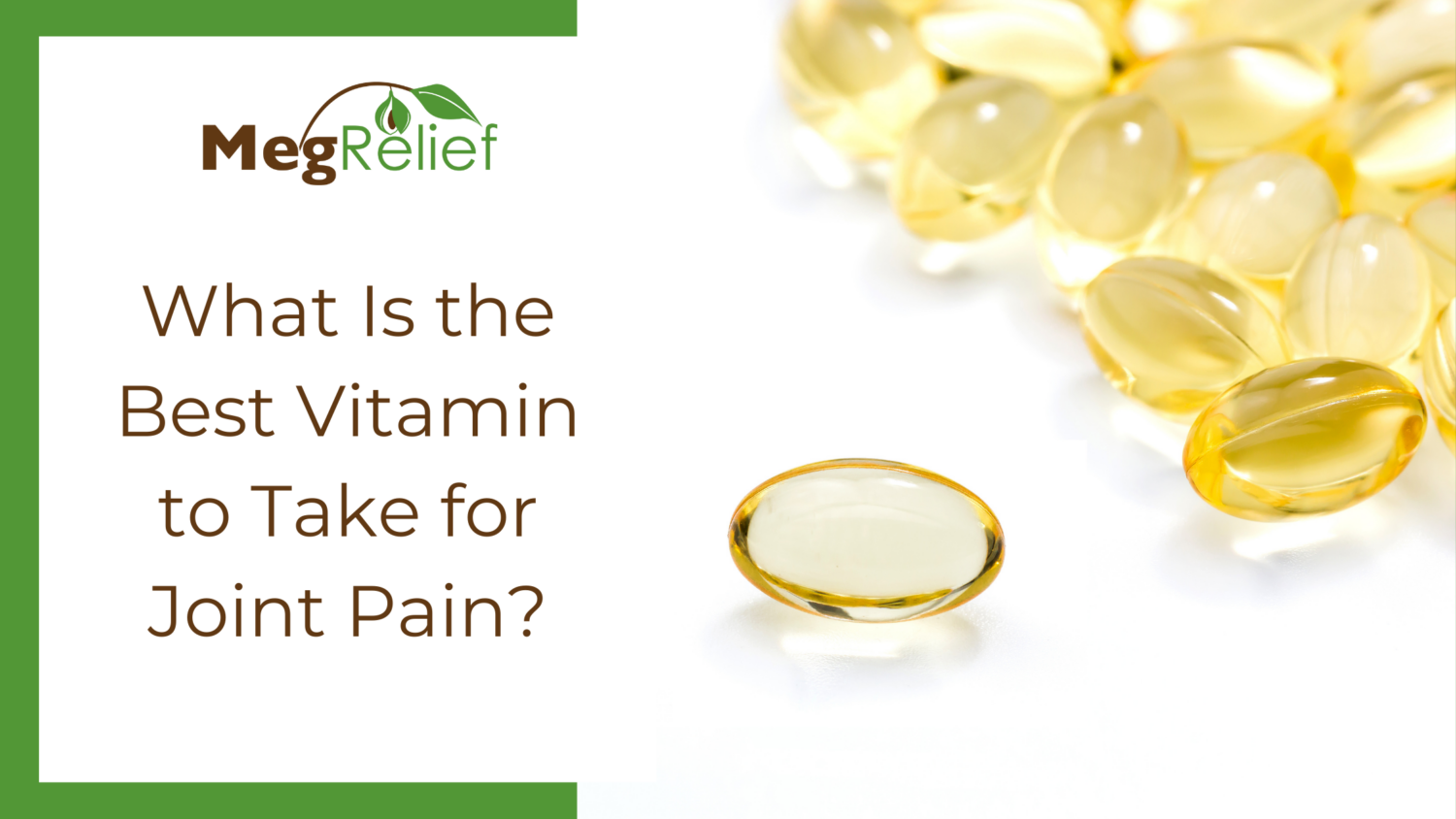What is the best vitamin to take for joint pain?
There are several vitamins that can help joint pain. Studies on each show benefits of the vitamins discussed in this post.
The best vitamin for joint pain
Vitamin D plays a major role in joint and bone health in the body as well as in the immune system, which is why it is important to make sure that your levels are where they need to be.

According to various studies, vitamin D is the best vitamin for joint pain and bone and joint health.
A study published in The Journal of Arthroplasty in 2017, shows fewer complications with hip and knee arthroplasty revision in people who have normal vitamin D levels.
The American Journal of Medicine published research in October of 2017 showing that maintaining sufficient levels of vitamin D is beneficial for osteoarthritis.
With those studies, you may find it hard to believe that approximately 41.6% of people today are deficient when it comes to vitamin D.
Vitamin D deficiency has been linked to poor immune system functioning and the development of autoimmune diseases such as rheumatoid arthritis.
Knowing now that 41.6% of people today need more vitamin D, do not rush into adding vitamin D pills to your daily life; instead, ask your doctor to check your levels. You may be able to up your daily intake of vitamin D by changing your diet to include seafood, fortified milk, eggs, and mushrooms. The best way to increase your levels, however, is by spending more time in the sun.
Vitamins and minerals that aid vitamin D in bone and joint health
There are other vitamins and minerals that aid vitamin D with bone and joint health; those are:
- Calcium-Calcium is a building block of bone health. If you buy calcium as a supplement to your diet, be careful not to exceed the upper limit of dosage as it can cause constipation or kidney stones. You can find calcium in seeds, dairy products like milk, cheese, and yogurt, fish, beans, and lentils.
- Vitamin K-A study published in Science Direct in July of 2016 shows that it has a role in the severity and progression of knee osteoarthritis. Good sources of vitamin K are kale, spinach, turnip and mustard greens, collards, Swiss chard, parsley, romaine and green- leaf lettuce, brussel sprouts, broccoli, cauliflower, and cabbage. It can be found in smaller amounts in fish, liver, meat, eggs, and cereals.
- Magnesium-Magnesium supports the structural development of new bone tissue and calcium’s function in healthy bones. It can be found in whole grains, spinach, quinoa, black beans, avocado, and dark chocolate.
- Omega-3 fatty acids-There are two studies-one from 1995 and one from 2006-that show that omega-3 fatty acids have anti-inflammatory properties that reduce arthritic pain in a safer way than NSAIDs. Also, the omega-3 fatty acid contained in fish oil pills helps to prevent certain enzymes from damaging the joints and is known to help reduce inflammation.
- Vitamin C-Vitamin C supports collagen production which is a major building protein of cartilage tissue. A study published in Clinical Rheumatology shows that people taking vitamin C have less pain and swelling than those not taking vitamin C. You can get vitamin C from cantaloupe, kiwi, mango, papaya, pineapple, watermelon, strawberries, raspberries, blueberries, and cranberries.
- Folic Acid-Studies have shown that folic acid reduces the uncomfortable symptoms in the hands of people with osteoarthritis. Folic acid is found in leafy green vegetables, citrus fruits, beans, bread, cereal, rice, and pasta.
- Vitamin E-Vitamin E supports the immune system. A study in The Annals of Rheumatic Disease showed that vitamin E supplementation provided significant pain relief to arthritis sufferers. You can find vitamin E in almonds, peanuts, hazelnuts, and vegetable oils.
- Vitamin B12-According to The Arthritis Foundation, vitamin B12 supports bone health and reduces arthritis pain. Foods that contain vitamin B12 are liver, clams, sardines, beef, tuna, trout, salmon, milk and other dairy products.

The best way to get the proper amount of vitamins and minerals your body needs is to eat a well-balanced diet and get regular exercise. However, if you already suffer from arthritis, your levels may already be low and diet alone may not be enough. You should speak with your doctor about checking your levels to determine whether or not they are normal.
Exercise helps make bones stronger
Weight-bearing physical activity helps keep bones strong by causing new bone tissue to form.
Types of weight-bearing physical activities are:
- Walking
- Tennis or racquetball
- Field hockey
- Stair climbing
- Jumping rope
- Basketball
- Dancing
- Hiking
- Soccer
- Weight lifting
The exercises listed above can help maintain bone and joint health, but you need to make sure that you wear the proper safety equipment when playing sports such as hockey or soccer and wear shoes that have adequate support when playing basketball or hiking.
The best vitamin for joint pain
The best vitamin for joint pain is vitamin D.
The best way to maintain healthy bones and joints is through diet and exercise. However, there are times you will need to supplement your diet with vitamin pills and supplements. Before you add vitamins and supplements to your daily diet, you should see your doctor first. Eating a well-balanced diet and exercise with weight-bearing exercises also helps maintain a safe and healthy weight, which is important in maintaining healthy bones and joints.
Should you have arthritis, you may not be able to do some exercises, but walking is a good place to start. Once the pain and inflammation are reduced, you can add hiking, weight-lifting, and dancing. If you need guidance, consult a physical therapist.
These vitamins and exercises discussed in this article can reduce your joint pain and boost your immune system. You can become healthier and reduce joint pain and inflammation without a large number of pharmaceuticals by eating a balanced diet and exercising. This does not mean that you will not need any pharmaceuticals, nor is this meant to be a diagnosis or treatment plan. For a proper diagnosis and treatment plan, seek the medical advice of your doctor.






